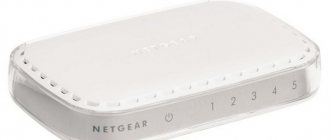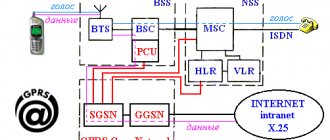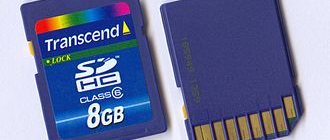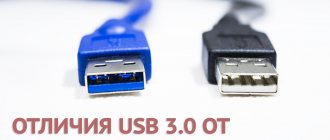When you choose a phone to buy and read the description, you can see the abbreviation WCDMA in the column dedicated to the network operating mode. The same thing is in the “Settings” section in the smartphone itself, along with GSM. If you are going to order a phone from another country, you will probably think about the meaning of this term, for fear of purchasing something that is unable to work in domestic conditions.
Next we will tell you about WCDMA and the difference from GSM.
WCDMA Features and Features
The standard is optimized for voice and data communications. Internet access speed reaches 2 Mbit when close to the tower and up to 48 KB when far away. For comparison, GPRS and EDGE technologies in the GSM standard offered a speed of 15-25 KB at best, more often the actual speed was 5-7 or 12 KB. Therefore, an increase in bandwidth provided comfortable access to the Internet, in particular loading pages and content, checking email, etc. In addition, the quality of voice communication has improved due to increased bandwidth.
The WCDMA radio interface uses two channels with a 5 MHz bandwidth. One channel is used to transmit the mobile phone signal to the base station and the other is used to receive the mobile phone signal from the base station. Both channels are at different frequencies, which eliminates the presence of interference and signal overlaps. There are no time or frequency restrictions, as is the case with GSM. Each subscriber receives the entire channel width of 5 MHz.
Since the broadcast of all connected subscribers overlaps, it is important to highlight each subscriber in the general broadcast. For this purpose, code division of the signal is used. The transmitter modulates the signal with a certain numerical code, which is assigned to each user, and the receiver, tuned to a similar code, selects the necessary part of the signal.
Which mode to choose
We believe that after reading the previous paragraphs you have no doubt which mode to choose: GSM, 3GSM or WCDMA. The latter is certainly better in all respects. If you live in a city (or other locality where 3G communication is provided) and are simply moving around, then specify WCDMA in the settings, and the connection will be excellent, and the phone will not die too quickly.
If you periodically leave the 3G coverage area (for example, you travel far outside the city where there are no stations), then you can request automatic switching from one technology to another.
You should mark GSM as the preferred network only when you do not want to use high-quality Internet for some personal reasons.
How to enable the selected mode:
- Go to “Settings” - “Mobile networks”.
- Click the “Network Mode” subsection.
- Check the box next to the option you want.
Please note that managing these settings is not available in every smartphone, and, depending on the internal structure, sections may have a different name, be moved to separate blocks, etc. It is better to look for the location of the setting in a specific phone model. For example, in LG, to get to the “Mobile Networks” heading, you need to follow the path: “Wireless Networks” - “Mobile Data” - “Menu” icon at the top right. The same thing can await you in other devices.
frequency range
The WCDMA network uses three network bands: 900, 1900-2100 MHz. The 900 MHz frequency allows for coverage of up to 10 km, which is approximately half as much as the 2100 MHz frequency. On the other hand, low coverage is compensated by increased network capacity and data exchange capacity. And one base station can serve up to 50 people simultaneously.
The GSM network usually uses a combination of frequencies of 900 and 1800 MHz. The receive and transmit channel widths are typically 25 and 75 MHz, respectively. In some countries, the GSM900 frequency channel width is 10 MHz higher - 35 MHz, due to which the number of frequency channels is 50 more - 174. More often, there are 124 frequency channels of 200 kHz per common channel. And for each frequency channel there are 8 physical channels of 25 kHz, which in turn are divided into a traffic and control channel.
Frequency, physical and logical channels in the GSM network.
A physical channel in GSM can accommodate up to 8 subscribers. More often, up to 5 people hang on one channel, since excess connections noticeably deteriorate the quality of communication. Another 1-2 slots are reserved for service needs. Therefore, if two frequency channels are allocated to the base station, the total number of simultaneously connected subscribers will not exceed 15. If 124 GSM900 frequency channels are used, the simultaneous number of active subscribers will reach 990 people, provided that two channels are reserved. At a frequency of 1800 MHz, the number of frequency channels is 374 or 2990 subscribers, subject to the reservation of two channels.
A comparison of the 900 and 1800 bands clearly demonstrates the expansion of network capacity with increasing frequency. In practice, it is beneficial for operators to allocate several frequency channels for each base station, while placing as many stations as possible. The dense location will allow you to serve more subscribers and improve coverage. And if we consider that WCDMA does not have such significant restrictions, the number of subscribers served is higher compared to GSM.
Second generation - 2G
In 1982, the European Conference of Postal and Telecommunications Authorities formed a working group called GSM (French Groupe Spécial Mobile - special group for mobile communications). The purpose of creating the group is to study and develop a pan-European terrestrial mobile communication system for general use. In 1989, the European Telecommunications Standards Institute continued the study and development of the second generation of mobile communications. The abbreviation GSM then acquired a different meaning - Global System for Mobile Communications (global system for mobile communications). In 1991, the first commercial second generation mobile networks appeared. The main difference between second-generation networks and the first is the digital method of data transmission. Digital data transmission technologies made it possible to introduce a text messaging service (SMS), and later, using the WAP (Wireless Application Protocol) protocol, it became possible to access the Internet from mobile devices. The data transfer speed in second generation networks was no more than 19.5 kbit/s. The further increase in user demand for mobile Internet provided the impetus for the development of next-generation networks. The intermediate stages between 2G and 3G networks were generations conventionally called 2.5G and 2.7G . 2.5G generation was designated GPRS (General Packet Radio Service) technology, which made it possible to increase the data transfer rate to 172 kbit/s in theory, and up to 80 kbit/s in reality. 2.7G generation is called EDGE (EGPRS) technology (Enhanced Data rates for GSM Evolution), which functions as an add-on over 2G and 2.5G. The data transfer speed in such networks can theoretically reach 474 kbit/s, but in practice it rarely reaches 150 kbit/s.
Advantages and Disadvantages of WCDMA
Strengths include:
- High Internet bandwidth.
- High-quality communication thanks to the use of the entire channel width of 5 MHz.
- There are no time or frequency restrictions.
- The network capacity is higher, which allows the operator to serve more subscribers.
- Code division of the signal significantly complicates the likelihood of eavesdropping on a conversation or intercepting data.
Weak sides:
- Due to the late introduction of the standard, coverage is inferior to GSM.
- If the coverage is unstable, the mobile device automatically switches to GSM, which speeds up battery consumption.
What is GSM
GSM has become a global cellular communication system. It is now a mobile communication technology on a global scale, especially in Asia and Europe, and is available in more than 210 countries. GSM uses a variant of TDMA (Time Division Multiple Access), which splits frequencies into multiple channels.
This technology converts voice into digital data and transmits it through a channel. The transmission occurs in a very short period of time, and the receiver of the signal does not notice the time interval (pause or delay).
Conclusion
The article describes in detail what WCDMA is, how it works and the main differences in comparison with GSM. The WCDMA standard is the logical evolution of the cellular network. The technology allows you to serve more subscribers, improve the quality of communication and the speed of Internet access. And the existing developments have made it possible to improve performance in the implementation of UMTS. Despite the dominance of 4G and the active development of 5G, WCDMA remains in demand in some regions where operators have not had time to update telecommunications equipment.
What network do you use? Leave messages in the comments below the article. Please also report if you find an error or inaccuracy in the article.
First generation - 1G
All first-generation standards were analog and had a lot of shortcomings. There were problems with both signal quality and technology compatibility. Among the first generation mobile communication standards, the most widely used are the following: • AMPS (Advanced Mobile Phone Service). Used in the USA, Canada, Australia and South America; • TACS (Total Access Communications System) Used in European countries such as England, Italy, Spain, Austria and a number of other countries; • NMT (Nordic Mobile Telephone – Nordic mobile phone). Used in Scandinavian countries. • TZ-801 (TZ-802,TZ-803), developed in Japan. Despite existing problems with quality and compatibility of standards, analogue mobile communication networks have still found commercial application. The Japanese were the first to do this in 1979, then in 1981 the analogue network was launched in Denmark, Finland, Norway and Sweden, and in 1983 in the USA.
Fourth generation - 4G
3G, which has not yet exhausted its capabilities, is being replaced by new technologies, fourth generation technologies (4G), which better meet the needs of the times. Technologies of the 4G generation have identified completely new requirements for the quality of the communication signal and its stability. The brainchild of joint research between Hewlett-Packard and NTT DoCoMo in the development of data transmission technologies in fourth-generation wireless networks became the LTE and WiMax standards. • The WiMAX standard was developed in 2001 by the WiMAX Forum, which includes manufacturers such as Samsung, Huawei Technologies, Intel and other well-known companies. Conceptually, WiMAX is a continuation of the Wi-Fi wireless standard. Versions of the WiMAX standard are divided into fixed, intended for stationary subscribers, and mobile, for moving subscribers at a speed not exceeding 115 km/h. The first commercial WiMAX network was launched in Canada in 2005. • The LTE standard (Long-Term Evolution) is essentially a continuation of the development of the GSM/UMTS standards and initially did not belong to the fourth generation of mobile communications. Today, LTE is the main standard for fourth generation networks (4G). First introduced by the aforementioned NTT DoCoMo, the world's largest Japanese cellular operator, LTE, in its tenth release LTE Advanced, was chosen by the International Telecommunication Union as the standard that meets the requirements of fourth generation wireless communications. The first commercial implementation of an LTE network was carried out in 2009 in Sweden and Norway. The maximum theoretical data transfer speed in LTE networks is 326.4 Mbit/s. In practice, the data transfer rate significantly depends on the frequency band used by the operator. The cellular operator Megafon currently has the largest frequency range (40 MHz), which is a serious advantage over other domestic cellular operators that use a bandwidth of 10 MHz. The maximum data transfer rate in an LTE network with a 10 MHz band width is 75 Mbit/s. Well, the maximum data transfer speed when using a 40 MHz band width can reach 300 Mbit/s.
additional characteristics
New generation networks are characterized by the presence of a QoS function with a set of priorities: streaming, conversational, background and interactive. As already mentioned, when moving to 3G networks, UMTS is used. What it is has been described in sufficient detail
It is important to note that the final implementation of such a transition requires the replacement of both subscriber terminals and base station subsystems. In addition, much of the equipment currently used at the core network level needs to be replaced.
The network architecture is significantly different in that the switch is divided into two independent levels - switching and signaling processing with service control. All this is evidence that for the subsequent transition to new generation networks, it will be necessary to modernize the subsystems of base stations and subscriber terminals. New UMTS bands and the implementation of all these goals will require the creation of electronic components and the attraction of huge investments.
In Kazakhstan
In Kazakhstan, 3G W-CDMA technology was introduced into the Kcell/Activ network - trademarks of Kcell JSC - from December 1, 2010 in the cities of Almaty and Astana. Since 2011, the cities of Aktau, Atyrau, Karaganda, Kokshetau, Kostanay, Kyzylorda, Taraz, Petropavlovsk, Semey, Taldykorgan, Ust-Kamenogorsk, Shymkent, Kaskelen, Talgar and Ekibastuz have been gradually connected.
In addition, 3G W-CDMA technology was introduced in the Beeline network, the former K-Mobile/Excess brand (trademark of KaR-Tel LLP) in the cities of Almaty and Astana. From January 1, 2011 in all regional centers: Aktobe, Aktau, Atyrau, Karaganda, Kokshetau, Kostanay, Kyzylorda, Petropavlovsk, Taldykorgan, Taraz, Ust-Kamenogorsk, Shymkent and the large cities of Semey, Ayagoz, Baikonur, Turkestan, Ekibastuz. From December 1, at least 90 3G base stations in the UMTS and HSDPA standards from Kcell and Kar-Tel will operate in Kazakhstan.
On April 24, 2011, the cellular operator Tele2, previously known under the Neo brand (Mobile Telecom-Service LLP), began operating in Kazakhstan, which launched the 3G standard (UMTS-900) in Almaty and Astana, and in the spring of 2012 in Astana. Pavlodar.
Fifth generation - 5G
Work on developing new standards for wireless data transmission continues unabated. Mainly with the sponsorship of one of the largest manufacturers of network equipment, the Chinese company Huawei. The widespread introduction of fifth-generation technologies is predicted in 2022. There is no clear information regarding the maximum data transfer speeds in 5G networks yet, but it is known that in pilot tests of 5G networks it was possible to achieve speeds of 25 Gbit/s. This is tens of times higher than the maximum data transfer rates in fourth generation networks.
Operating principle of UMTS
What this is has already become clear from the previous description, but how such a network works is worth understanding. In the CN block, the most important operations are performed, which boil down to connecting the mobile station to the network, its further paging, cellular selection and localization of the subscriber, making incoming and outgoing calls, handover of the subscriber between base stations. CN is divided logically into two domains – CS and PS. The base station is responsible for radio signal processing, channel encoding and rate adaptation, and much more. In addition, it controls the power in the internal loop. UMTS cellular communications can implement connections with various external networks, which are divided into two groups: circuit switched and packet switched. The first option is for telephone communication, and the second is for connecting to the Internet. Since the switching center coordinates its work with fixed networks, it has all the functions that are required for circuit switching and is also responsible for managing the connection. The switching center performs the procedures that are required for handover and location registration.











